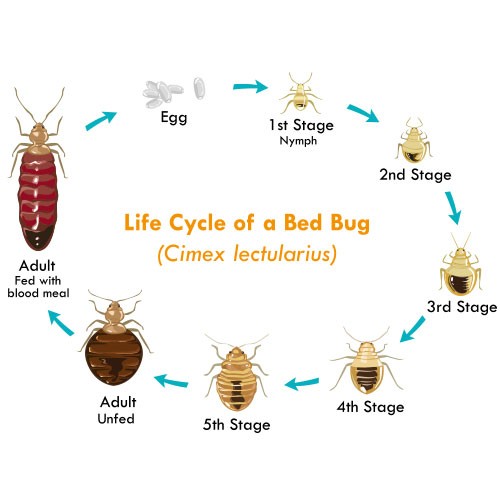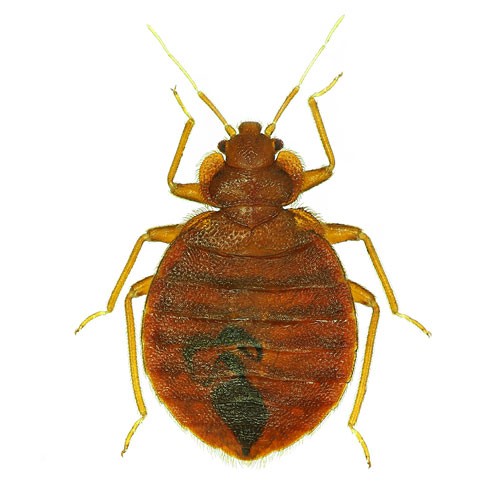Bed Bugs Pest Control
Where Do Bed Bugs Come From?
These pests are known as bed bugs due to their tendency to feed on humans while they sleep in their beds. Their ability to easily hitch rides on various objects allows them to spread across various dwellings, making them a challenging pest to manage. Therefore, understanding how to recognize bed bugs is vital.
The persistent issue of bed bug infestations in the United States is significant. Data from the latest Bugs Without Borders survey reveals that in 2014, an overwhelming 99.6 percent of pest control professionals reported treating bed bug problems.
History of the Bed Bug
Bed bugs, bed-bugs, or bedbugs are parasitic insects of the cimicid family that feed exclusively on blood. Cimex lectularius, the common bed bug, is the best known, as it prefers to feed on human blood. Other Cimex species specialize in other animals, e.g., bat bugs, such as Cimex pipistrelli (Europe), Cimex pilosellus (western US), and Cimex adjunctus (entire eastern US). The name “bed bug” derives from the preferred habitat of Cimex lectularius: warm houses and especially near or inside beds and bedding or other sleep areas. Bed bugs are mainly active at night, but are not exclusively nocturnal. They usually feed on their hosts without being noticed.
A number of adverse health effects may result from bed bug bites, including skin rashes, psychological effects, and allergic symptoms.They are not known to transmit any pathogens as disease vectors. Certain signs and symptoms suggest the presence of bed bugs; finding the insects confirms the diagnosis.
Bed bugs have been known as human parasites for thousands of years. At a point in the early 1940s, they were mostly eradicated in the developed world, but have increased in prevalence since 1995, likely due to pesticide resistance. Because infestation of human habitats has been on the increase, bed bug bites and related conditions have been on the rise as well.
Detection
Once a bed bug finishes feeding, it relocates to a place close to a known host, commonly in or near beds or couches in clusters of adults, juveniles, and eggs—which entomologists call harborage areas or simply harborages to which the insect returns after future feedings by following chemical trails. These places can vary greatly in format, including luggage, inside of vehicles, within furniture, amongst bedside clutter—even inside electrical sockets and nearby laptop computers. Bed bugs may also nest near animals that have nested within a dwelling, such as bats, birds, or rodents. They are also capable of surviving on domestic cats and dogs, though humans are the preferred host of C. lectularius.
Once a bed bug finishes feeding, it relocates to a place close to a known host, commonly in or near beds or couches in clusters of adults, juveniles, and eggs—which entomologists call harborage areas or simply harborages to which the insect returns after future feedings by following chemical trails. These places can vary greatly in format, including luggage, inside of vehicles, within furniture, amongst bedside clutter—even inside electrical sockets and nearby laptop computers. Bed bugs may also nest near animals that have nested within a dwelling, such as bats, birds, or rodents. They are also capable of surviving on domestic cats and dogs, though humans are the preferred host of C. lectularius.
Humans are being significantly impacted by bed bugs, which started to re-emerge in the 1990s as important household pests in developed countries throughout the world. They are small blood-sucking insects that impact public health and well-being of all classes in a negative aspect. Bed bugs are transported, and they have become a major problem over a relatively short period of time in a wide variety of residential and commercial settings. If untreated or improperly treated such as by the home owner the bed bug populations rapidly increase and infestations will quickly spread to impact others. In multi-family living dwelling, they can impact surrounding neighbors by traveling through the walls and ductwork as well as electrical outlets.
Compared to other insects, bed bugs are more difficult and very expensive to control. Bed bugs will need a wide variety of treatments and necessitate multiple integrated pest management (IPM) strategies that will require professional pest management services. However, in part due to the high cost of professional bed bug control, the public has increasingly turned to over-the-counter (OTC) chemical products as a low cost alternative for bed bugs. These methods applied by non-professionals could create a wider spread of the Bed bug population. Public expectations of these products can range from total eradication to simple decontamination, yet the vast majority of OTC chemical products are contact toxicants that have negligible impacts on bed bug infestations.
FAQ
Q: How can I tell if I have bed bugs?
A: Look for small bloodstains on bedding, shed skins, a sweet odor, or live bugs around sleeping areas.
Q: Can bed bugs transmit diseases?
A: While bed bugs feed on blood, there’s currently no evidence that they transmit diseases to humans.
Q: How long can bed bugs survive without feeding?
A: Bed bugs can live several months without a blood meal under favorable conditions.
Q: Are chemical treatments safe for eliminating bed bugs?
A: Yes, when applied by professionals, chemical treatments are safe and effective against bed bugs.
Q: Can bed bugs be prevented when traveling?
A: Yes, inspect hotel rooms and luggage, and keep belongings away from beds and floor to reduce risk.
Bed Bug Facts
Adaptive Survivors: Bed bugs have existed for thousands of years. They are highly adaptable pests and have coexisted with humans for centuries, making them one of the most persistent household pests.
Exclusively Blood Feeders: Unlike many other insects, bed bugs exclusively feed on blood, with a strong preference for human blood. They use two hollow tubes to pierce the skin of their host; one injects saliva containing anticoagulants and anesthetics, while the other withdraws blood.
Resilient in Starvation: Bed bugs can survive for extended periods without feeding. Adults can live for about five months to a year without a blood meal under optimal conditions, such as moderate temperatures.
Rapid Reproduction: A female bed bug can lay hundreds of eggs over her lifetime. These eggs are about the size of a speck of dust, making them hard to detect. This rapid reproduction rate can lead to quick infestations if not managed properly.
Nocturnal and Elusive: Bed bugs are primarily nocturnal and are most active at night when they feed on sleeping humans. During the day, they hide in a variety of places close to where people sleep, including mattresses, bed frames, furniture, and even behind wallpapers, making them difficult to detect.







Our Office

Quick links
Services
Contact
Service Areas - We service all of St. Louis City and St. Louis County areas
Affton, MO. 63123 | Arnold, MO. 63010 | Ballwin, MO. 63021, 63011 | Barnhart, MO. 63012, 63057 | Berkeley, MO. 63042, 63114, 63121, 63134, 63140 | Brentwood, MO. 63144 | Bridgeton, MO. 63074 | Chesterfield, MO. 63017 | Clayton, MO. 63105 | Cottleville, MO. 63304, 63338, 63376 | Crestwood, MO. 63126 | Creve Couer, MO. 63146 | Dardenne Prairie, MO. 63368 | Des Peres, MO. 63131 | Earth City, MO. 63044, 63045 | Ellisville, MO. 63011, 63017 | Eureka, MO. 63025, 63069 | Fenton, MO. 63026 | Ferguson, MO. 63033 | Florissant, MO. 63033 | Frontenac, MO. 63131 | Glencoe, MO. 63005, 63038, 63040 | Grover, MO. 63040 | Hazelwood, MO. 63042, 63134 | High Ridge, MO. 63049, 63069, 63051 | House Springs, MO. 63051 | Imperial, MO. 63012 | Jennings, MO. 63136 | Kirkwood, MO. 63122 | Ladue, MO. 63124 | Lemay, MO. 63125 | Manchester, MO. 63021 | Maplewood, MO. 63117 | Maryland Heights, MO. 63043 | Mehlville, MO. 63125, 63129 | Normandy, MO. 63133, 63135 | O’Fallon, MO. 63366, 63368 | Oakville, MO. 63129 | Olivette, MO. 63132 | Overland, MO. 63114 | Pagedale, MO. 63133, 63135 | Richmond Heights, MO. 63117 | Shrewsbury MO. 63119 | St. Ann, MO. 63074 | St. Charles, MO. 63301, 63302, 63303 | St. Louis City, MO. | St. Louis County, MO. | St. Louis, MO. | St. Peters, MO. 63304, 63376 | Sunset Hills, MO. 63127 | Town & Country, MO. 63141 | University City, MO 63130 | Valley Park, MO. 63088 | Webster Groves, MO. 63119 | Wildwood, MO. 63005, 63040, 63025, 63038, 63069 |

